A Confronting Journey Through Colonial Past
When I wanted to see the chimpanzees during my two weeks in The Gambia, I had to go inland. I took the local bus. Destination: Georgetown, also known as Janjanbureh. From a slavery history perspective, this is an impressive place. It’s located on the Gambia River. Slaves were put on boats here heading to Kunta Kinteh Island – the former James Island – I was told.
You should definitely visit that island too when you’re in The Gambia.
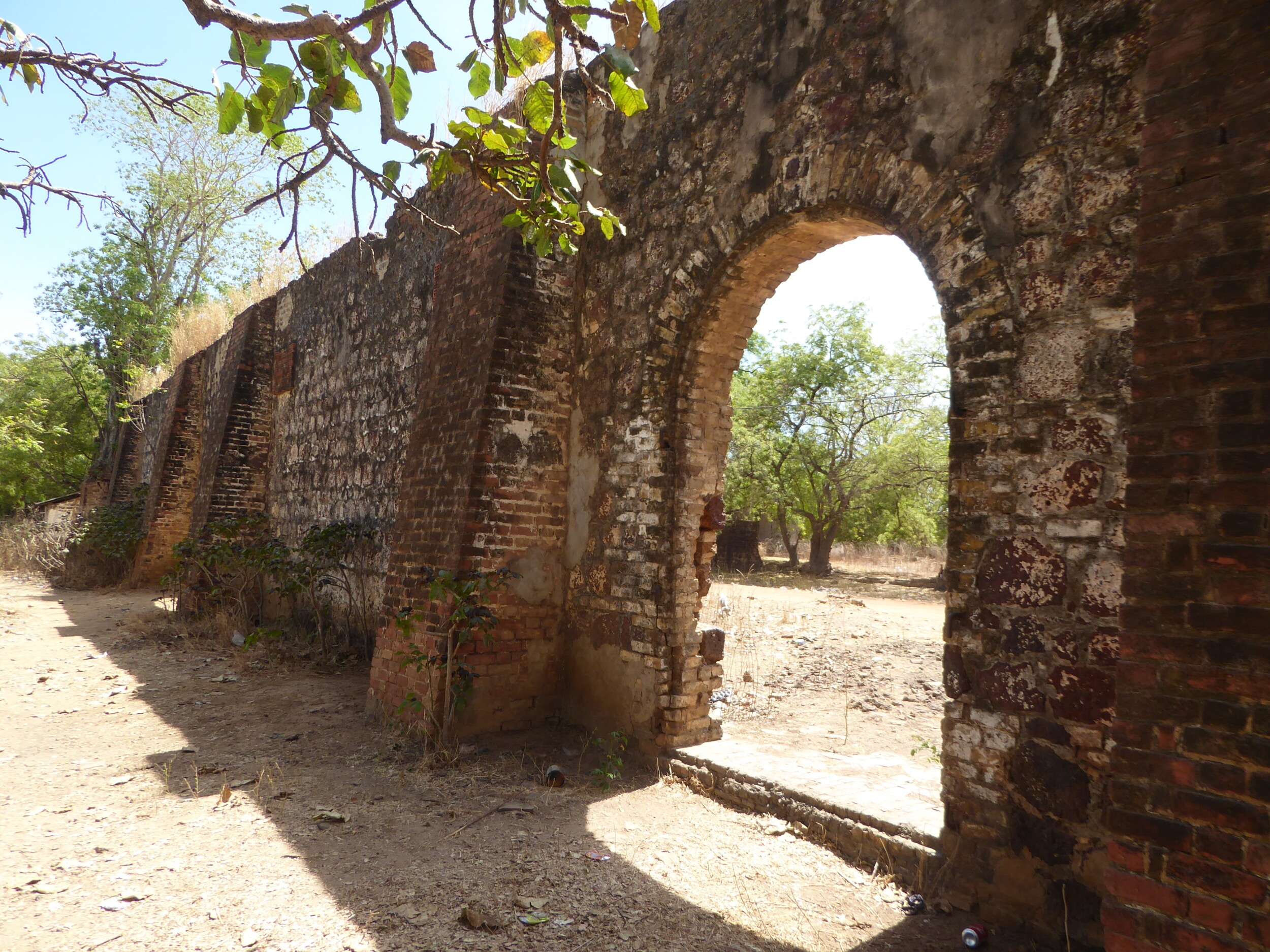
The History of Georgetown / Janjanbureh
Georgetown – or also MacCarthy Island – is a former British settlement, founded in 1823. In 1995 the place got its old name Janjanbureh back. Yet the Gambians continue to use the name Georgetown.
A Controversial History
And then it gets interesting. And confusing.
When I search online for the slavery past of this place, I read that Georgetown actually housed freed slaves. But when I was there, a very different story was told. Is that exploitation of tourism? Or are the Gambians telling the story of lost history? Of Janjanbureh, not Georgetown?
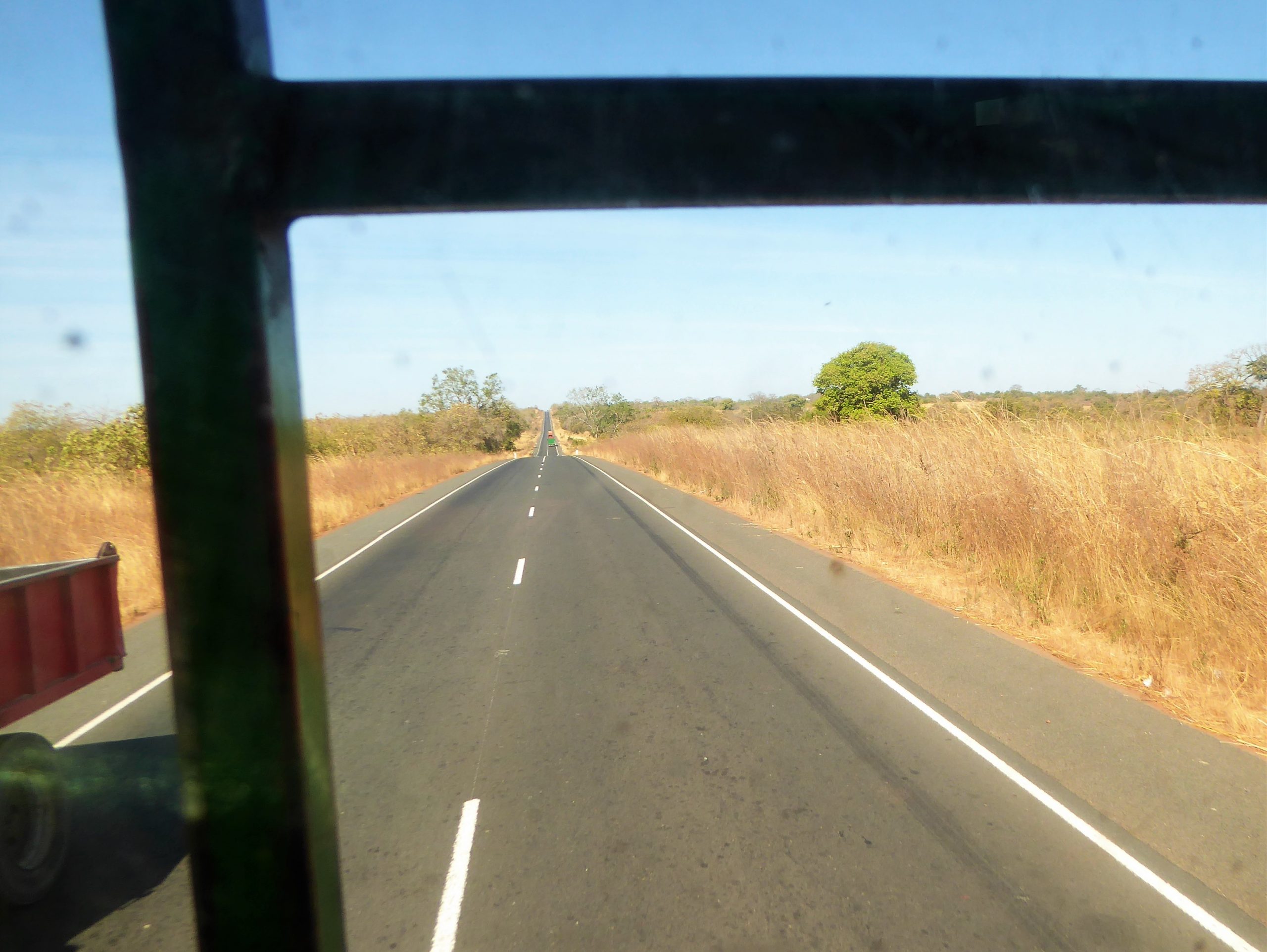
Research is being done on this. I came across this discussion on a Gambian forum. The truth probably lies more nuanced: Georgetown was indeed founded as a settlement for freed slaves in 1823 (after the British slavery ban of 1807), but the region did play a role in the slave trade before that. Due to its strategic location on the Gambia River, it was an important transit area.
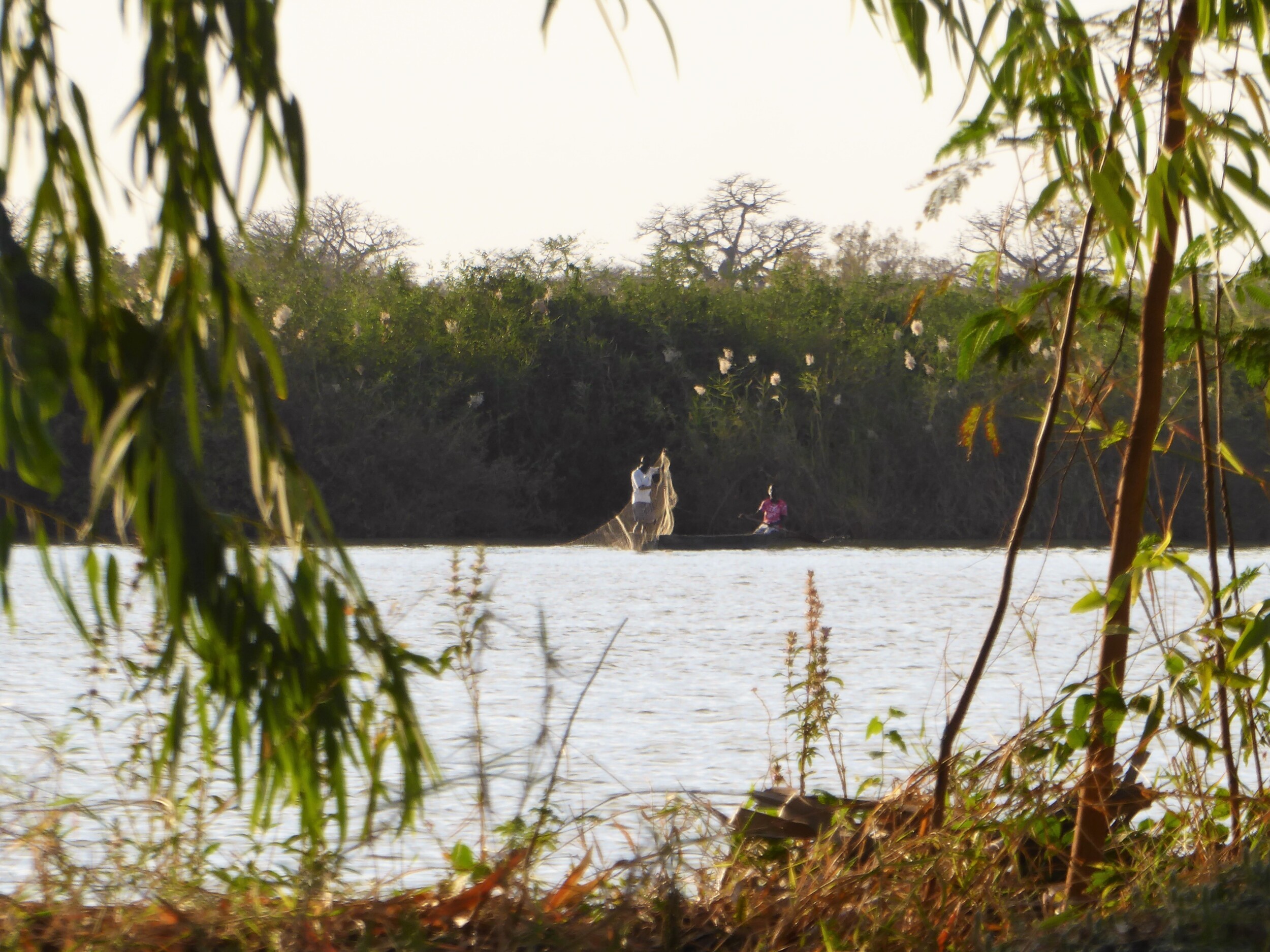
Tour Through Janjanbureh: The Dark Places
When you get off the bus and walk around, it doesn’t take long. Soon a boy or man will approach you. He wants to guide you to the most cruel places. He starts telling you about the history. About the strategic location along the Gambia River. A good base for the British. For slavery. Therefore the name Janjanbureh was also replaced by Georgetown.
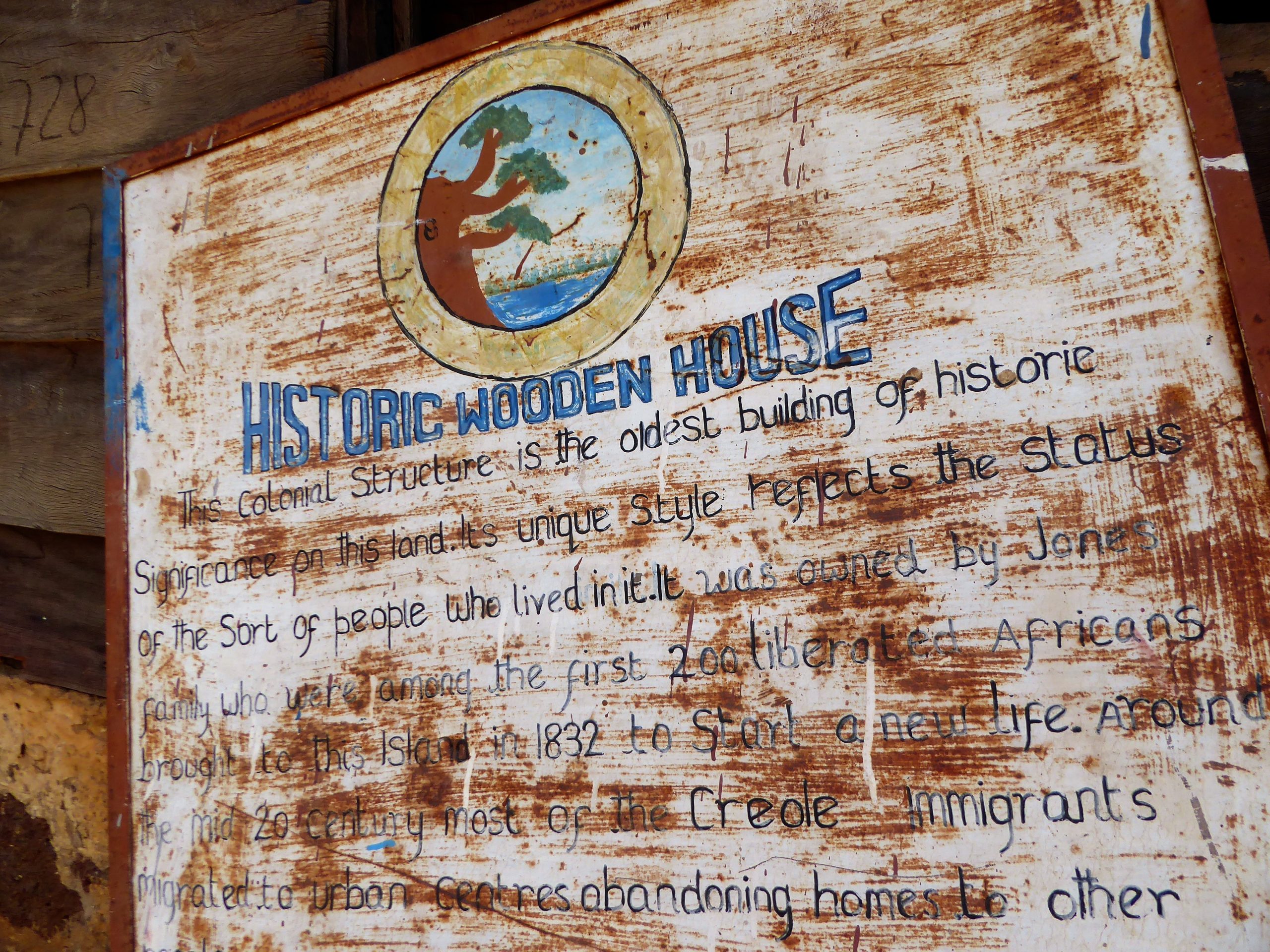
The Wooden Slave House of the Jones Family
First he takes us to see a house which is still the only old wooden house that was inhabited by freed slaves. The Jones family lived here and they were part of the first 200 freed slaves in the year 1832.
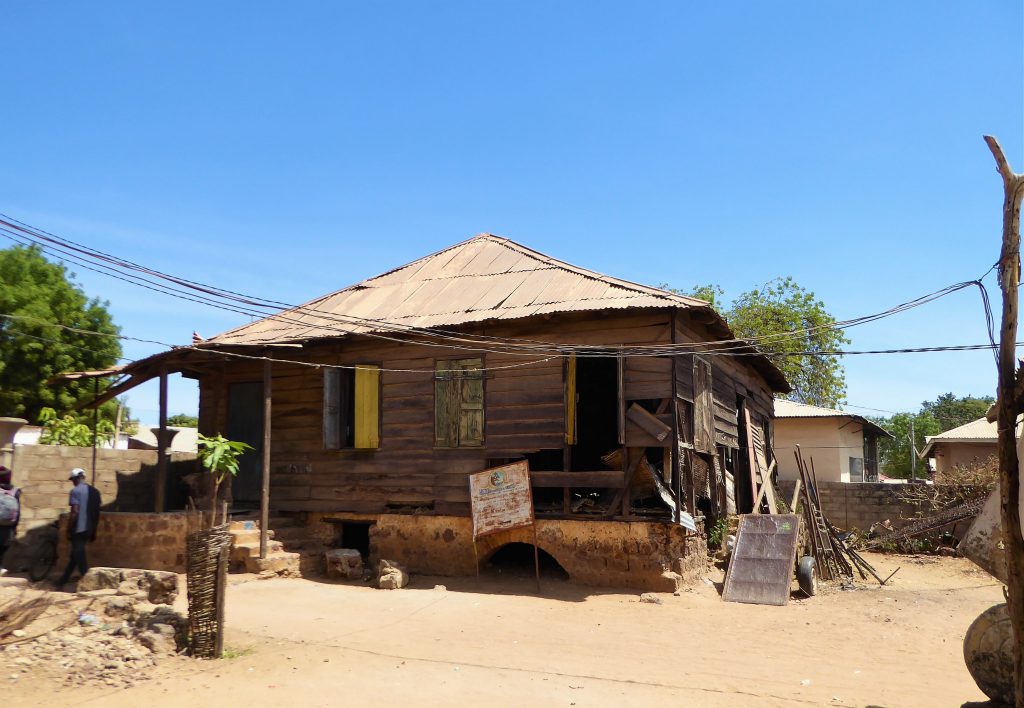
The Storage Place with Chains
Then he takes us to an old storage place where several old chains are attached to the walls. They’re so high on the wall that it’s hard for me to imagine how these were used during the slavery era. The boy guiding us indicates that slaves might have been hung. I shudder at the thought.
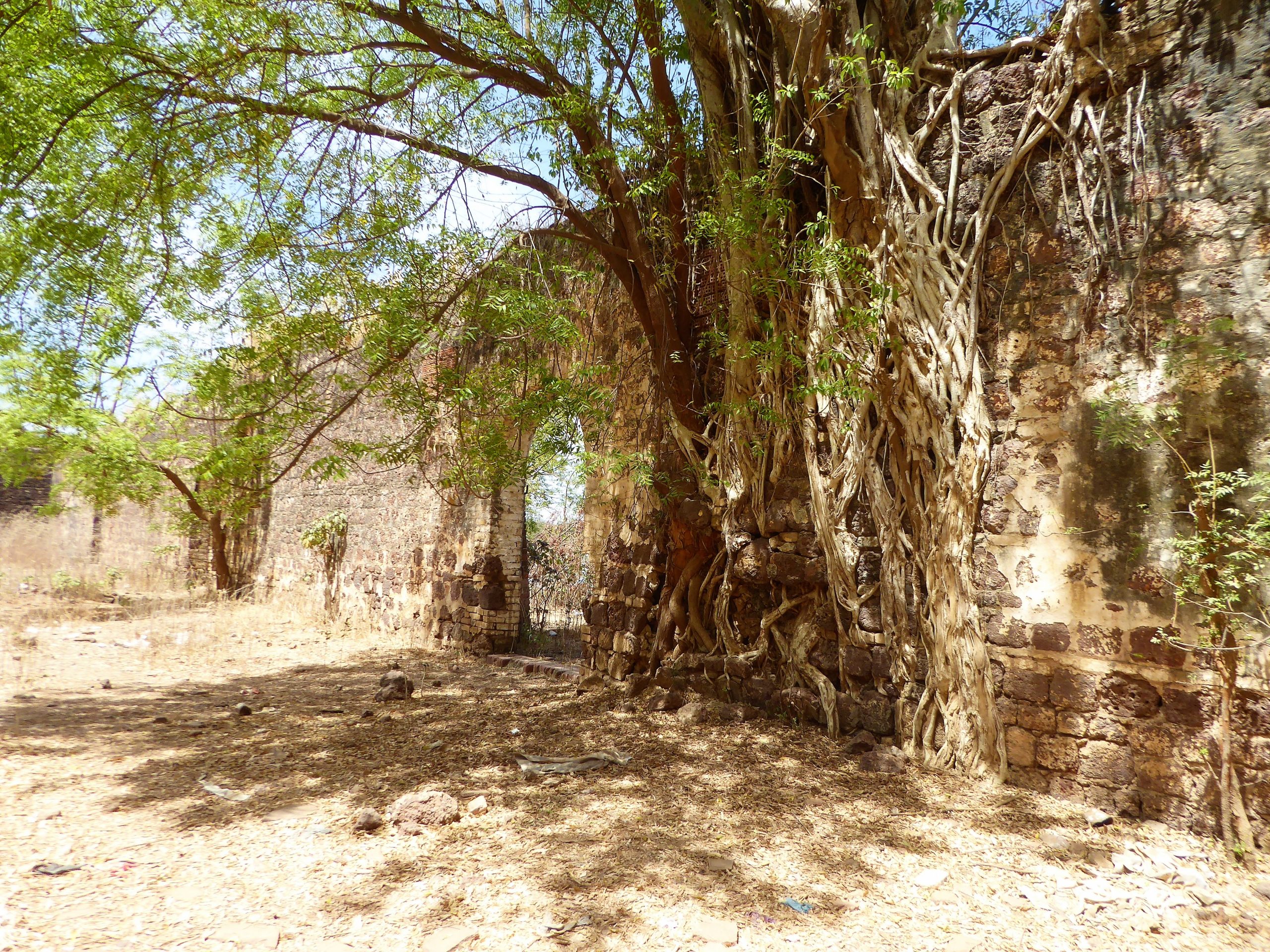
Freedom Tree Monument and Triangle Park
Then he takes us to the freedom tree. Sounds beautiful, right? It’s not, according to the boy.
This tree stood behind barbed wire. If you ran from the river and could reach this tree and touch it, you would have your freedom back. Were it not that the British army was stationed here. It was virtually impossible to get here.
Behind the barbed wire there were also dogs, I was assured.
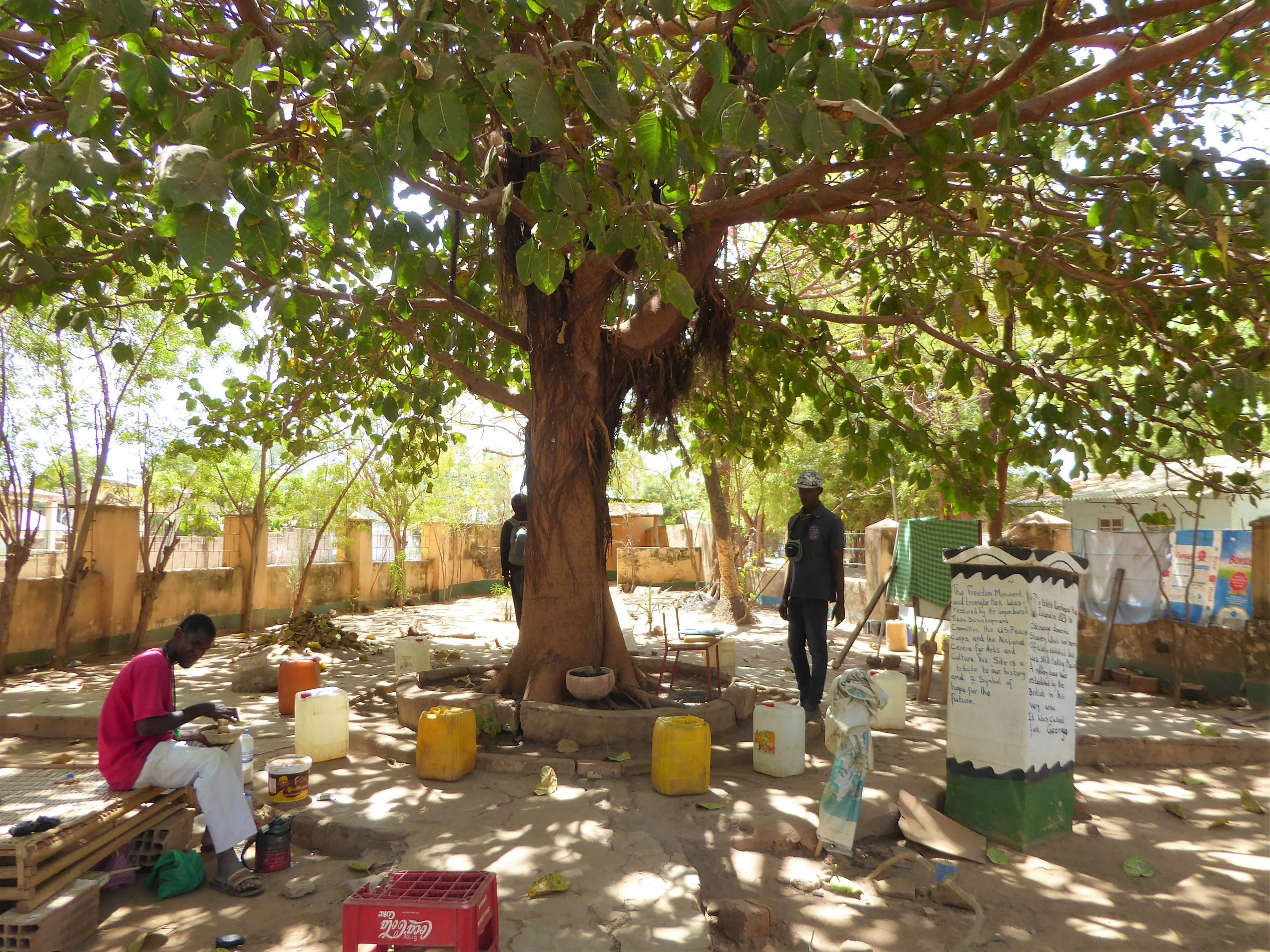
These kinds of terrible events certainly took place in The Gambia. Also along this river. But as it seems, this tree is more in memory of what was. And specifically aimed at the future, how it is now.
It’s the symbol of freedom. But also a tribute to the victims of slavery.
If this place was only founded in 1823, slavery had already been abolished. Then only freed slaves would have been brought here to rebuild their lives. The stories that local guides tell mix historical facts with emotional narratives, not always accurate, but powerful.
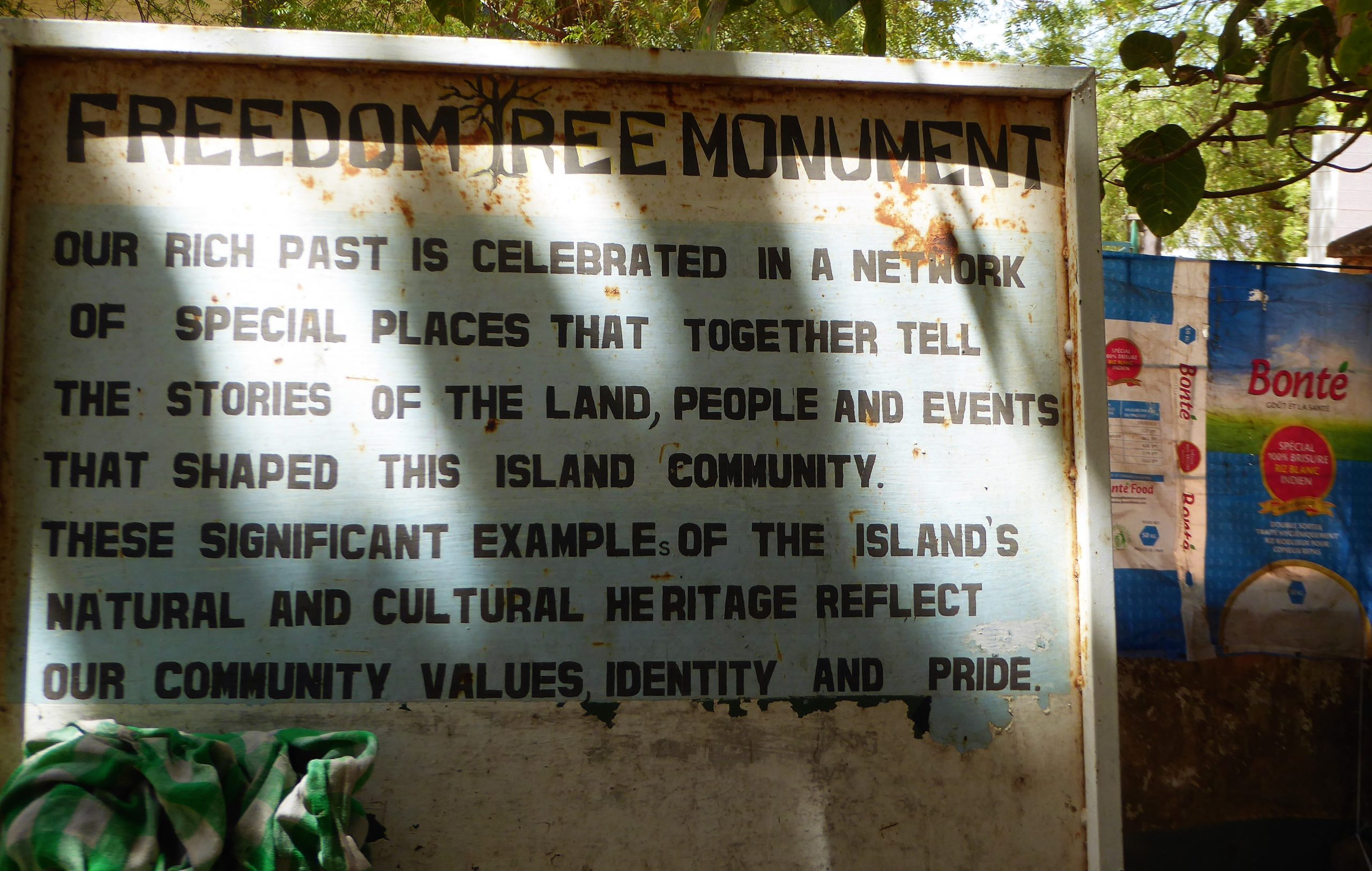
The British Administration Building
After this we walk to the building where the British leadership sat. A large white office building with several buildings around it. In front of the building stands an old cannon from colonial times. The entire grounds are poorly maintained. Only the main building in the photo still looks reasonably good. The rest is decaying. Slowly but surely it’s being consumed by time and climate.
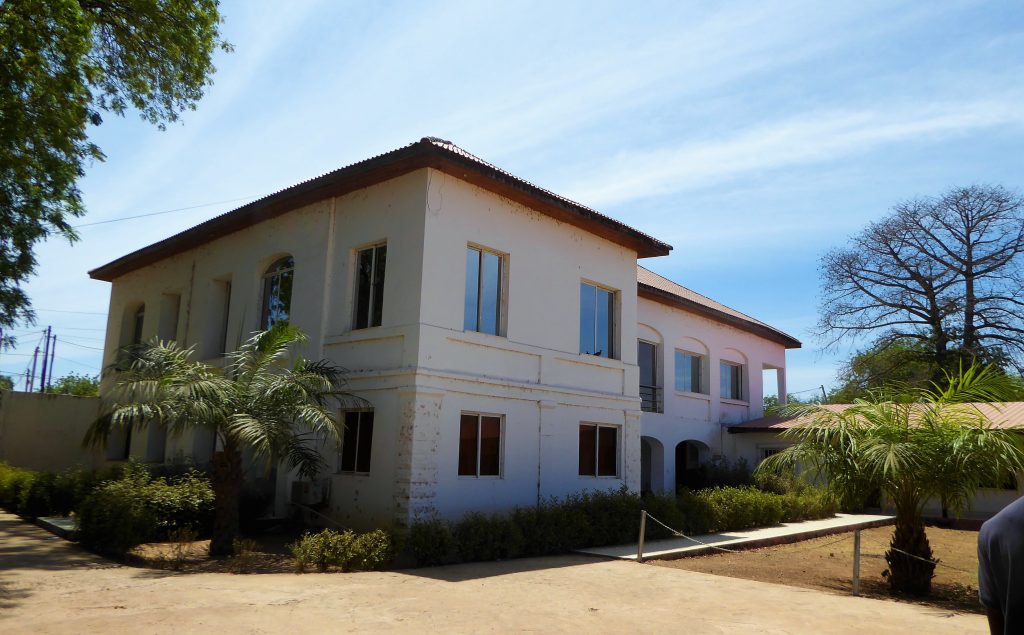
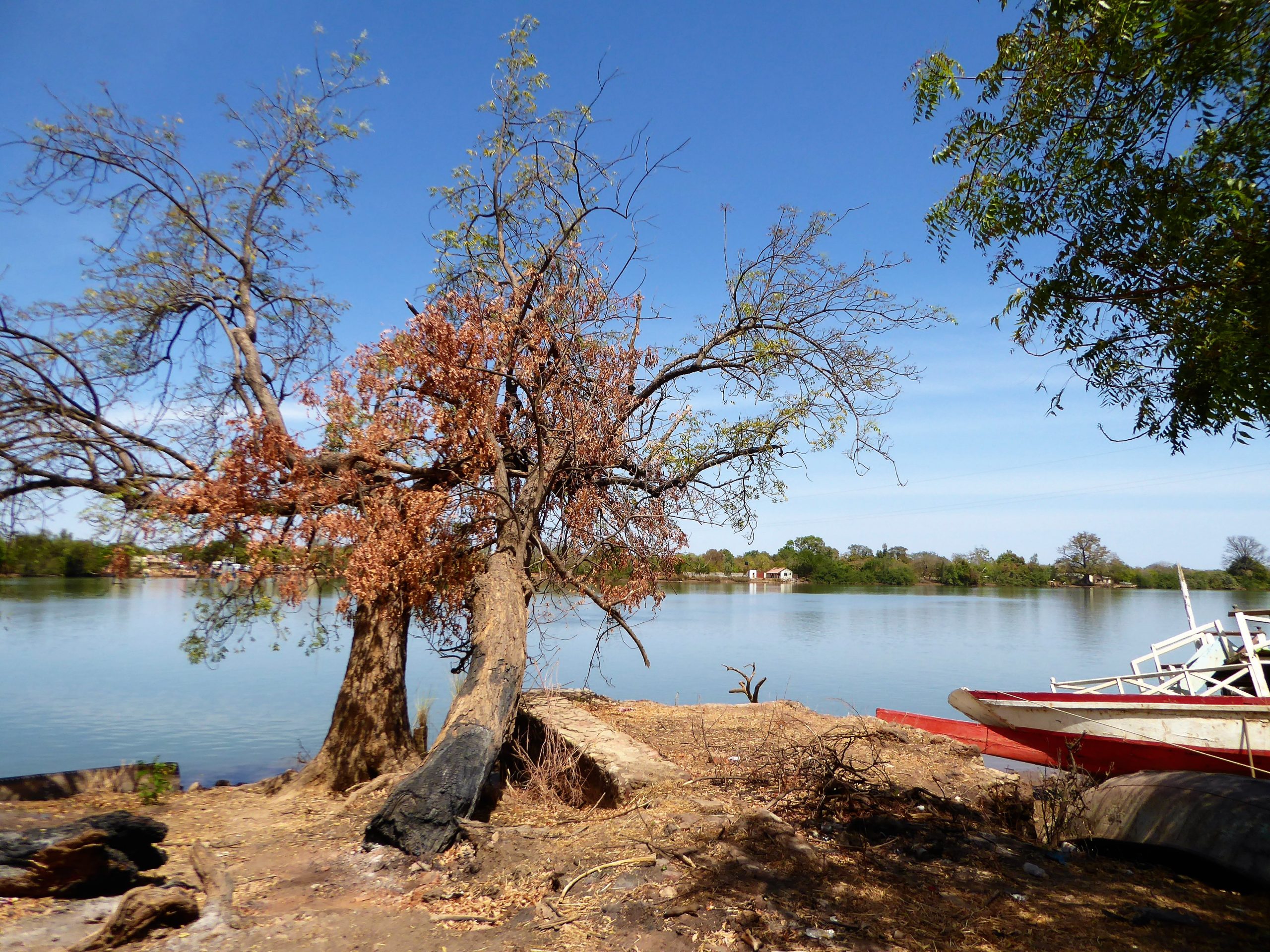
The Storage House by the River: The Prison
From the administration building we walk further to the river. By the river stands a storage house. A large warehouse that also served as a prison. On the wall of this large warehouse we see murals. They remind us of the slavery past. Of The Gambia. Of this part of Africa.
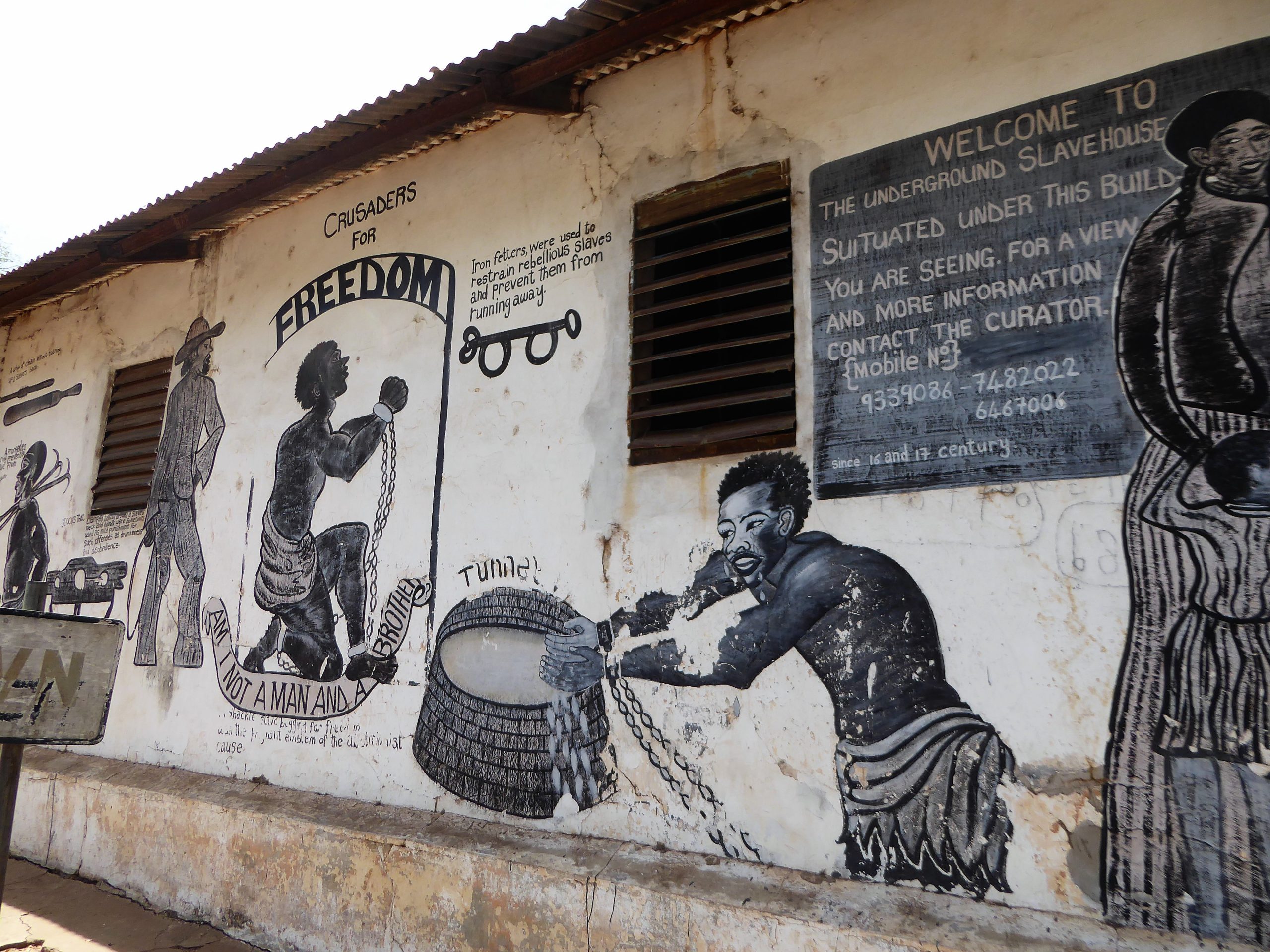
The Basement with Chains
In the section under the storage is a basement. A basement in which chains have been found.
I’m taken downstairs. I see a large room with small rooms around it. Shackles are scattered about. Chains are attached to the walls in various places.
It’s a low, small room. If it’s full of people here… You can’t get out to go to the toilet. No fresh air. No daylight. No humanity.
That’s terrible! I always get a very bad feeling when I visit places like this. It’s the history of a country. It’s the history that my ancestors partly caused.
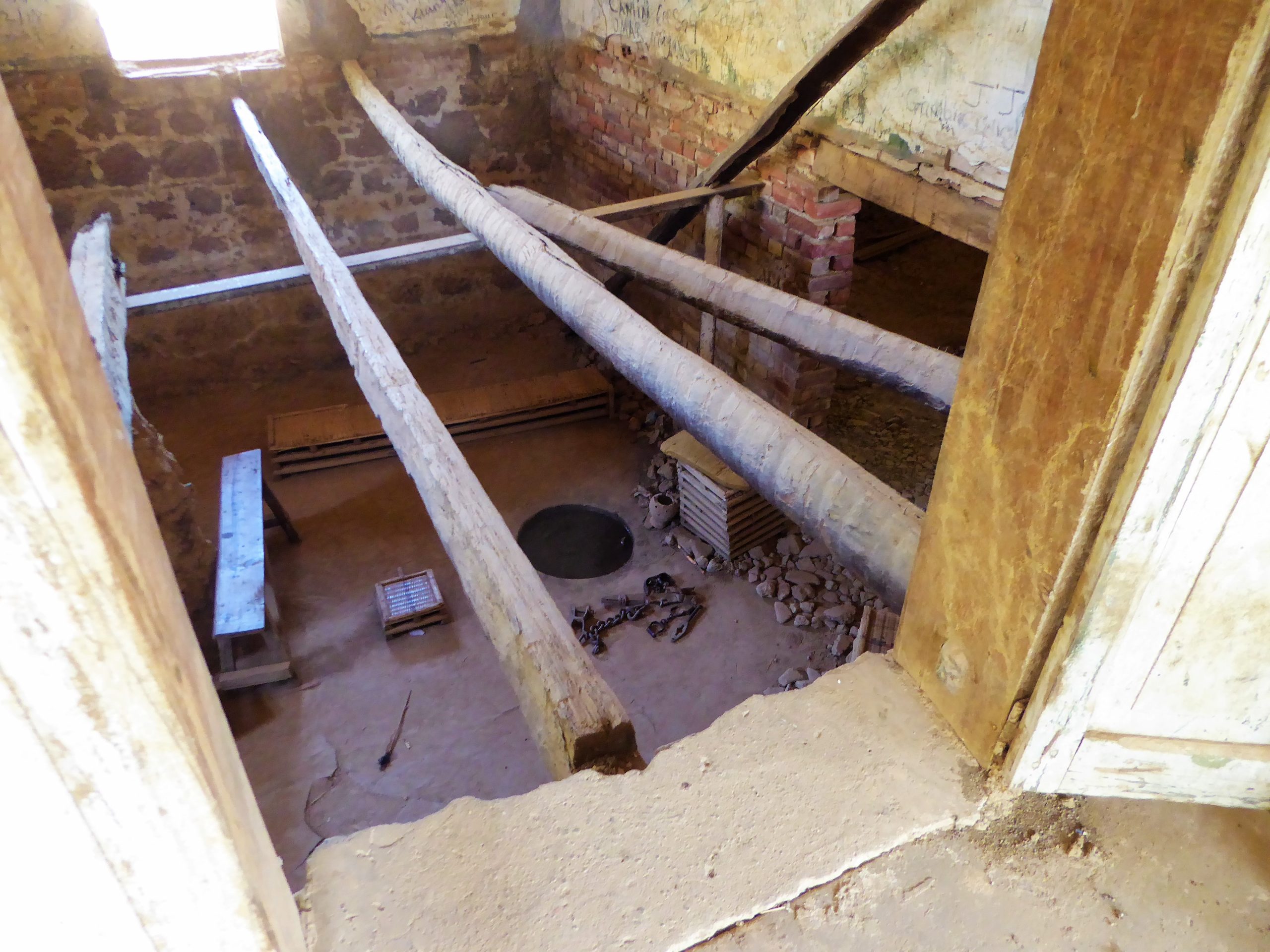
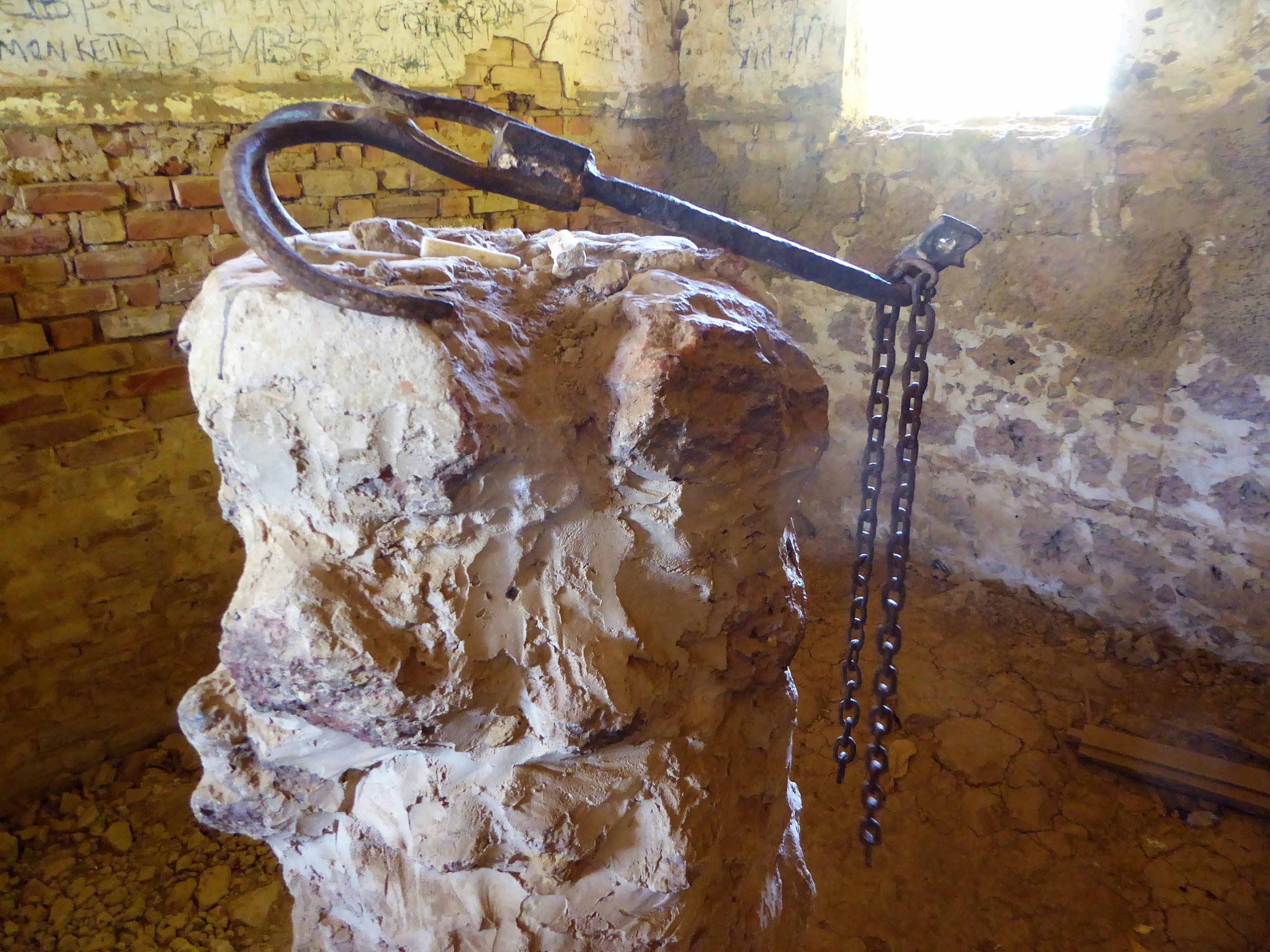
More Colonial Buildings
From the river I still have a view of another warehouse. Also from colonial times. You wonder what all took place here. How many people suffered here? How many lives were destroyed here? And how many stories were never told here?
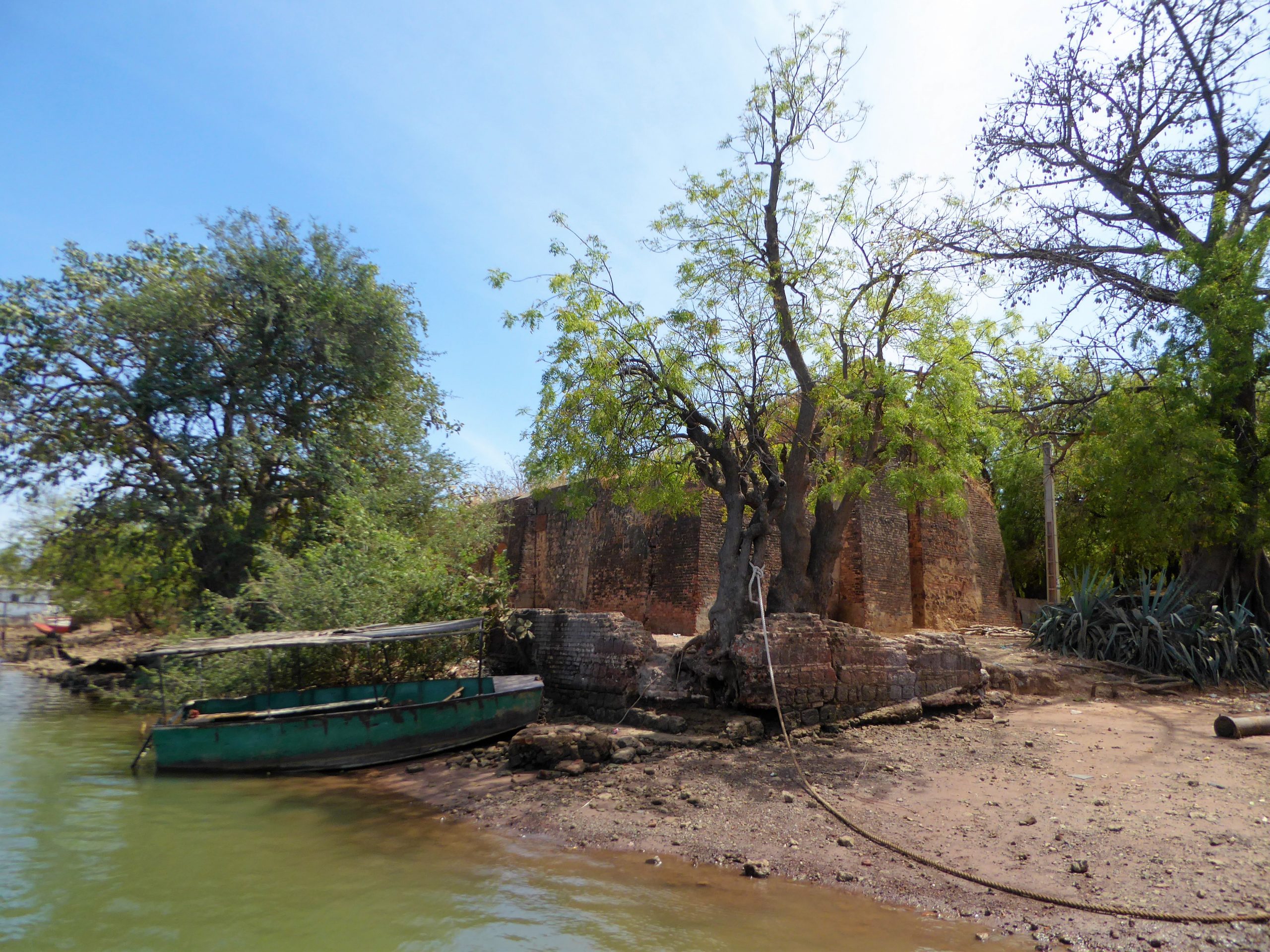
Practical Information: Visiting Janjanbureh
How Long to Stay?
I was only in Janjanbureh – The Gambia for an afternoon. After that I quickly went on to Kairoh Garden in Kuntaur. From there I cycled to the stone circles of Wassu. And I also got to see the chimpanzees on Baboon Island!
In hindsight, I should have taken more time. Janjanbureh deserves at least a full day, maybe even an overnight stay. There’s much to see. Much to feel. Much to process.
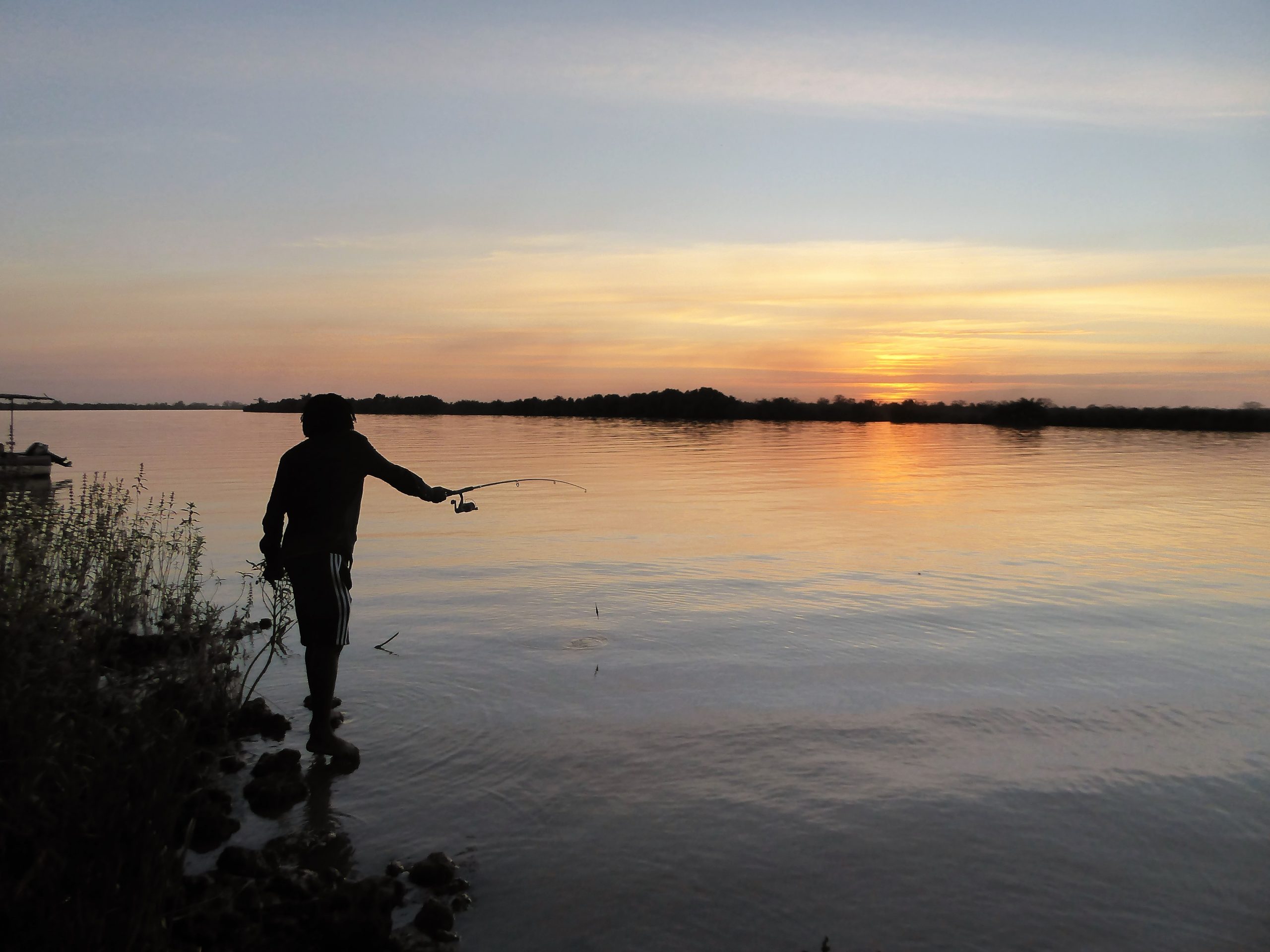
How to Get to Janjanbureh / Georgetown?
By Local Bus (South Route)
I went to Janjanbureh via the south side of the Gambia River. You can take the local bus that departs from a bus station near Kotu and Kololi.
I stayed in Bijilo (Baobab Resort). It was a short half hour drive with a taxi that morning to the bus station.
The bus journey itself takes about 4-5 hours, depending on stops along the way. It’s not luxury, but it is authentic. You sit among local people with their goods. Chickens, bags of rice, baskets of fruit. It’s part of the experience.
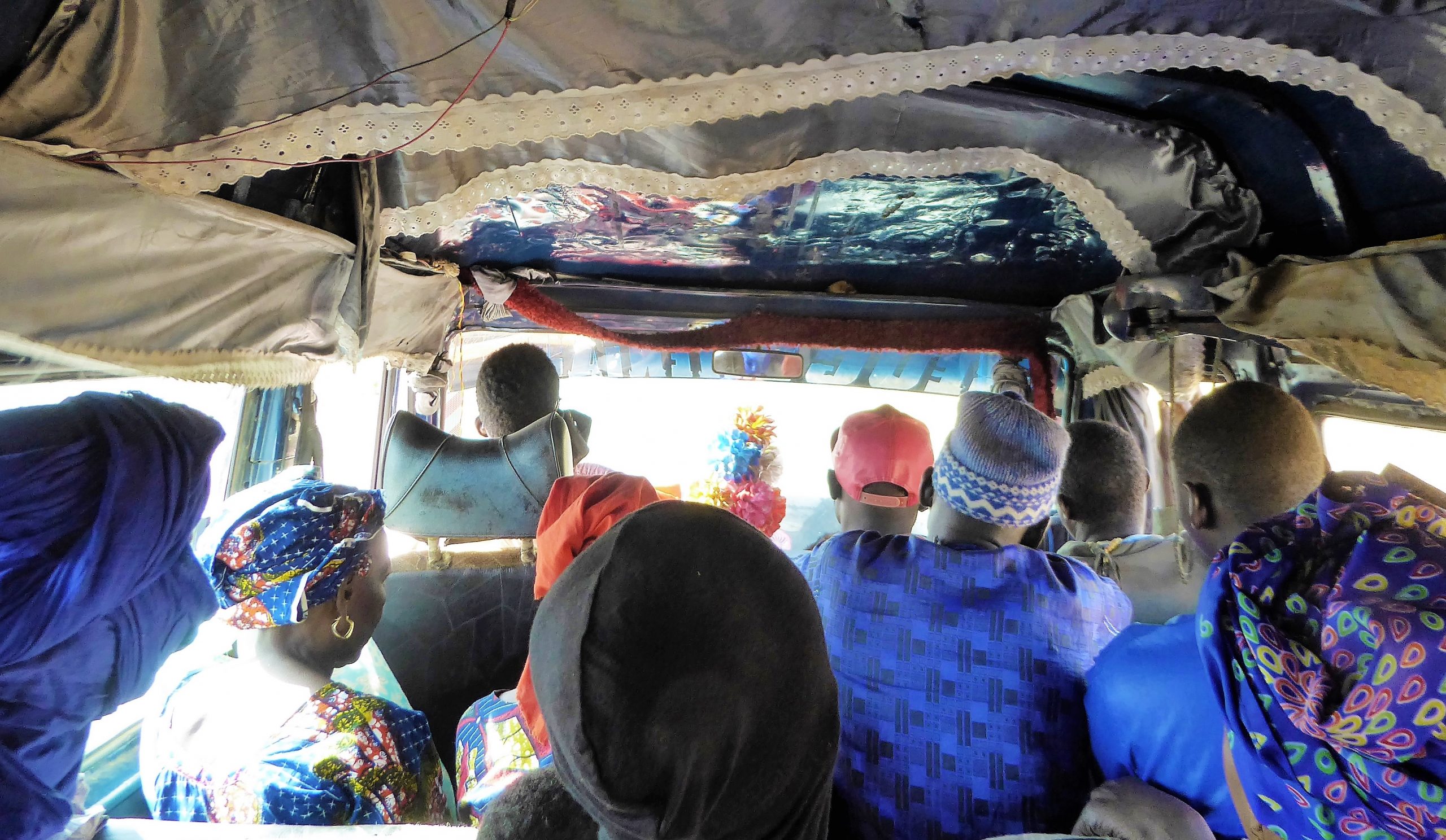
Advantages of south route:
- Cheap (approximately 100-150 dalasi)
- Authentic experience
- No ferry needed
Disadvantages:
- Time-consuming
- Uncomfortable when bus is full
- Many stops along the way
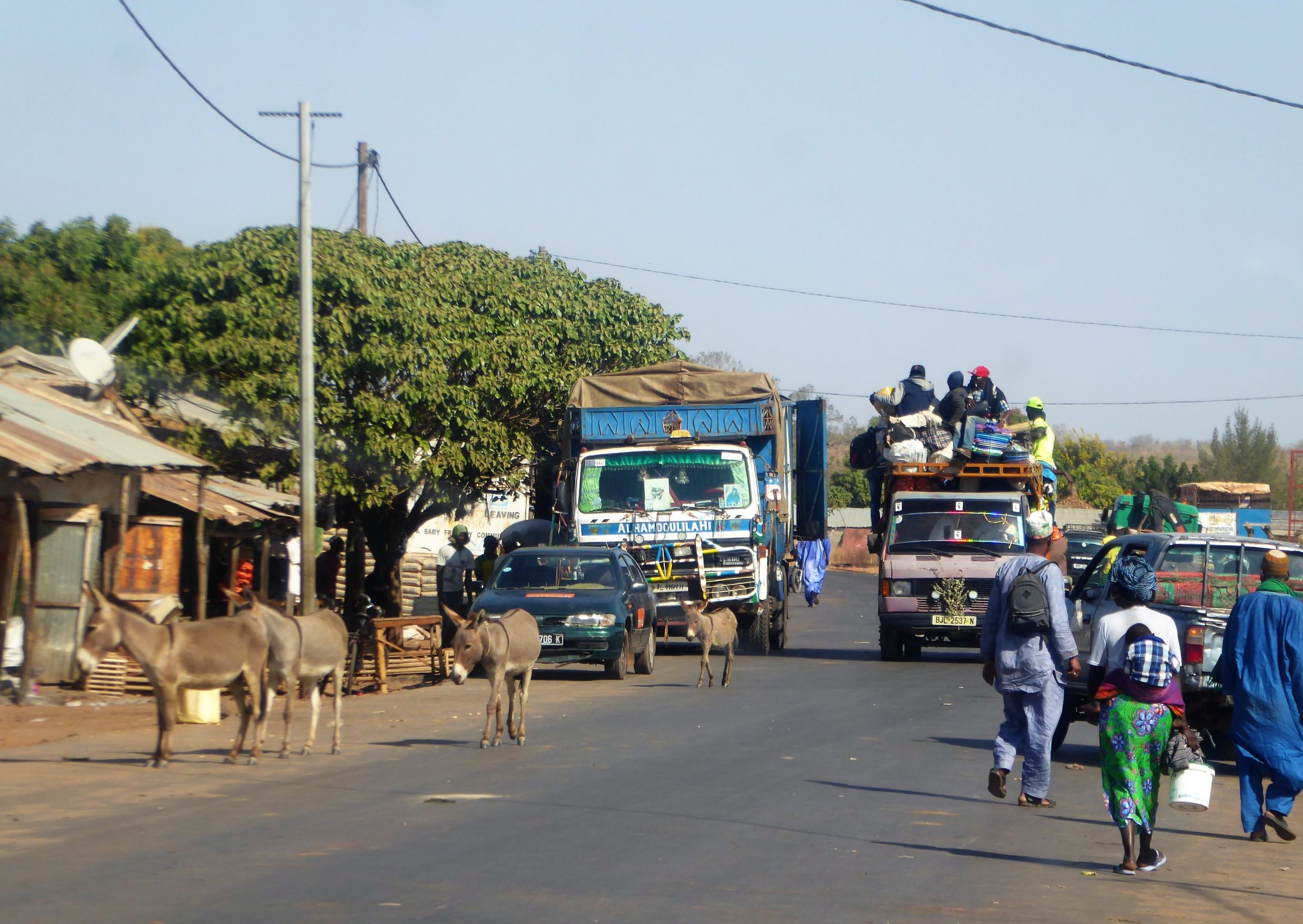
By Shared Taxi (North Route)
On the way back we went with a shared taxi on the north side. This way is faster. Only you have to cross the Gambia River by ferry afterwards.
All the time you save with the journey, you lose again waiting for the ferry. And the sailing itself.
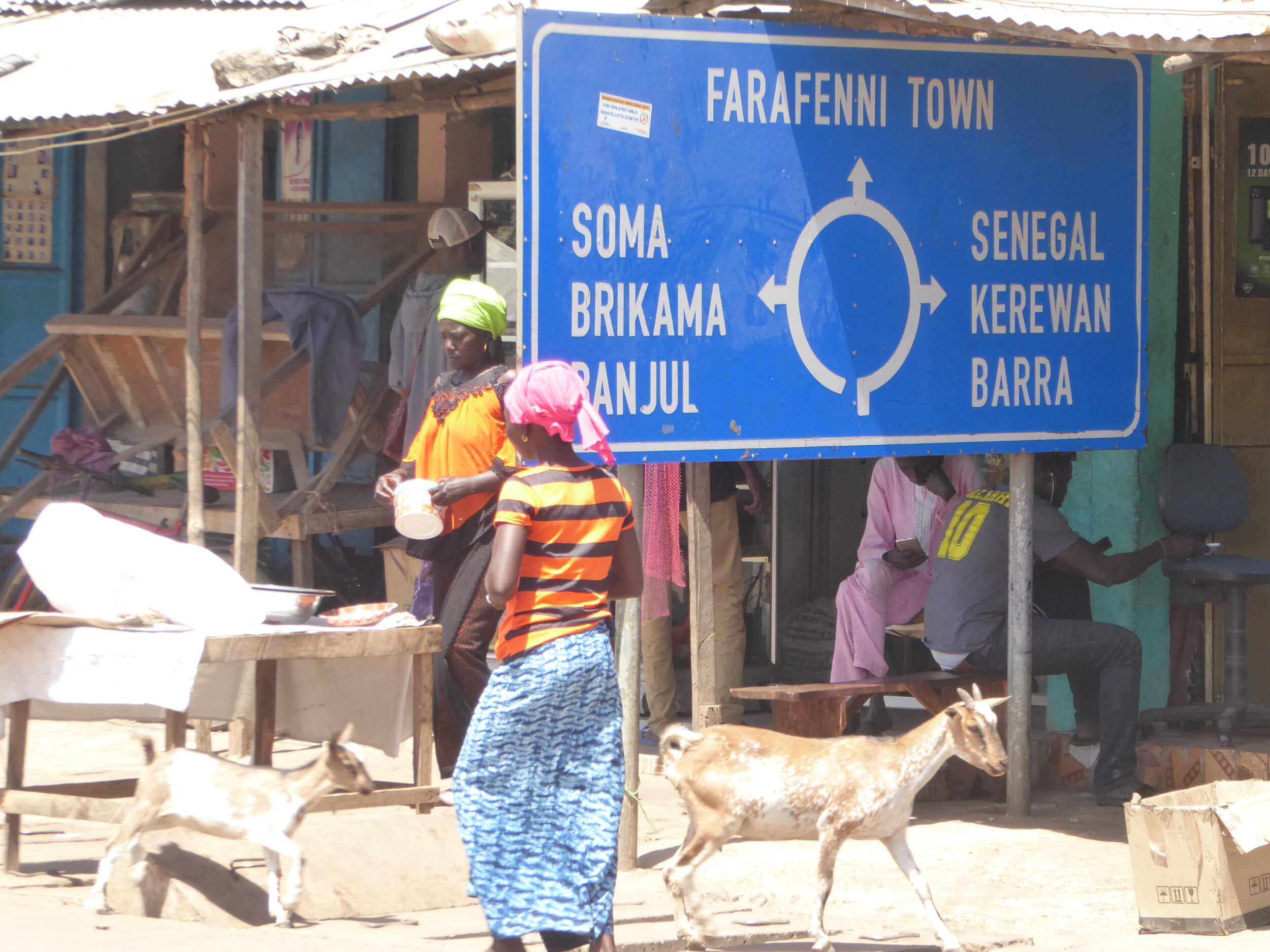
Advantages of north route:
- Faster driving (fewer stops)
- More comfortable than the bus
- Nice ferry experience across the river
Disadvantages:
- More expensive (300-500 dalasi)
- Dependent on ferries
- Can be busy in bad weather conditions
The Ferry: A Separate Adventure
Because the weather hadn’t been good and many people had been waiting, too many people came on board. We were stuck for a while.
Because yes… everyone is just allowed on board. Then we’ll see if we make it across.
Safety is really hard to find here sometimes!
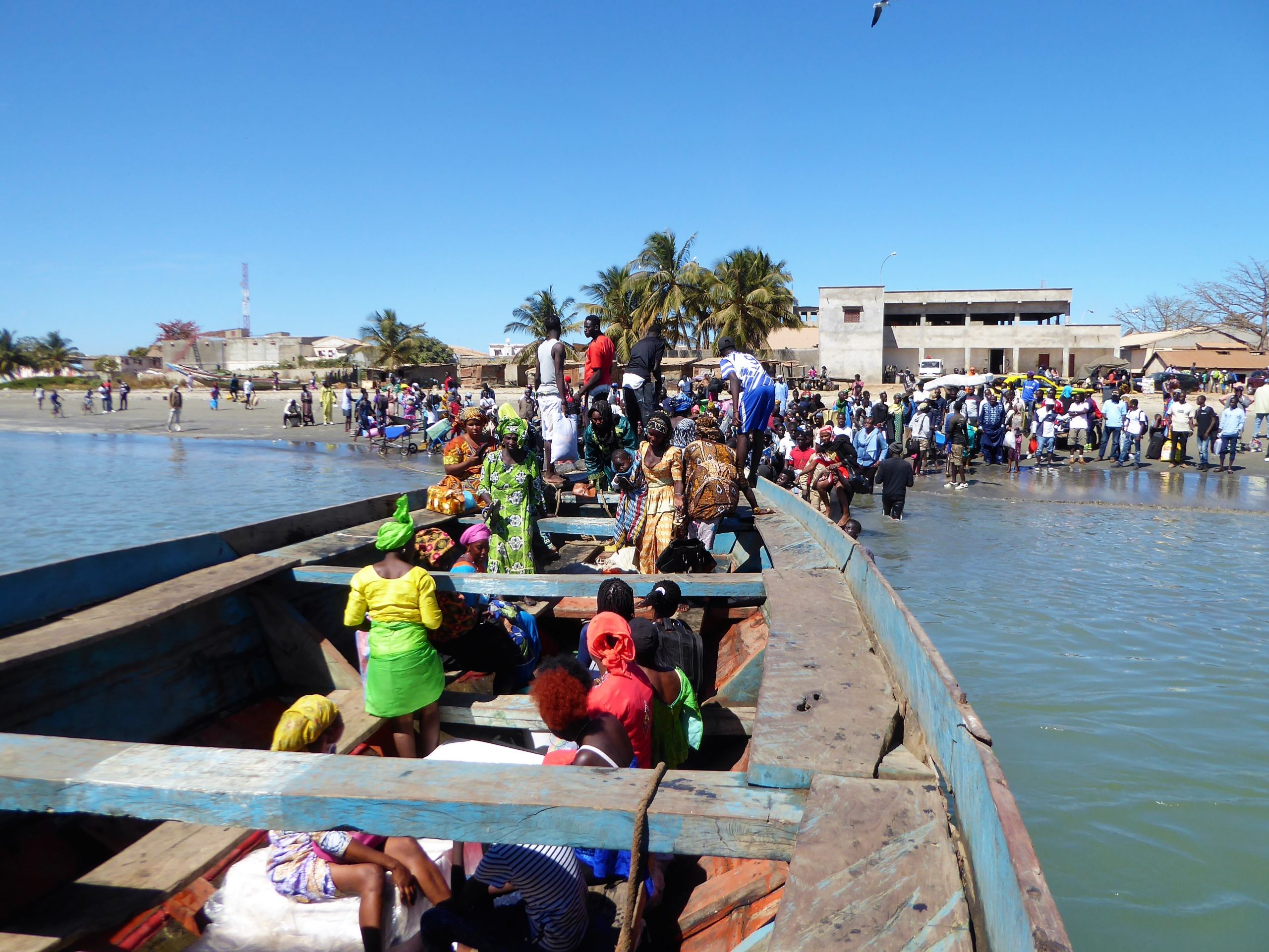
But you can also go to the other side with others. There are plenty of boats going to the other side. Only then you’ll be sitting among all kinds of goods.
This was a few days earlier. When the boat to the other side wasn’t running at all. So we knocked on another one asking if we could come along.
We weren’t the only ones, as you can see.
Accommodation Near Janjanbureh – The Gambia
For my stay I was at Kairoh Garden in Kuntaur during my trip inland. I thought it was really great! I can really recommend this one! There I had my own hut with an eco toilet and a hot shower. Really nicely arranged. Want to stay cheaper? Then they also have rooms with a shared shower.
Interested in staying in Janjanbureh? Then check out Finfoot Lodge. It’s another beautiful spot by the water where you can truly relax. From here, you can also easily explore the places mentioned above.
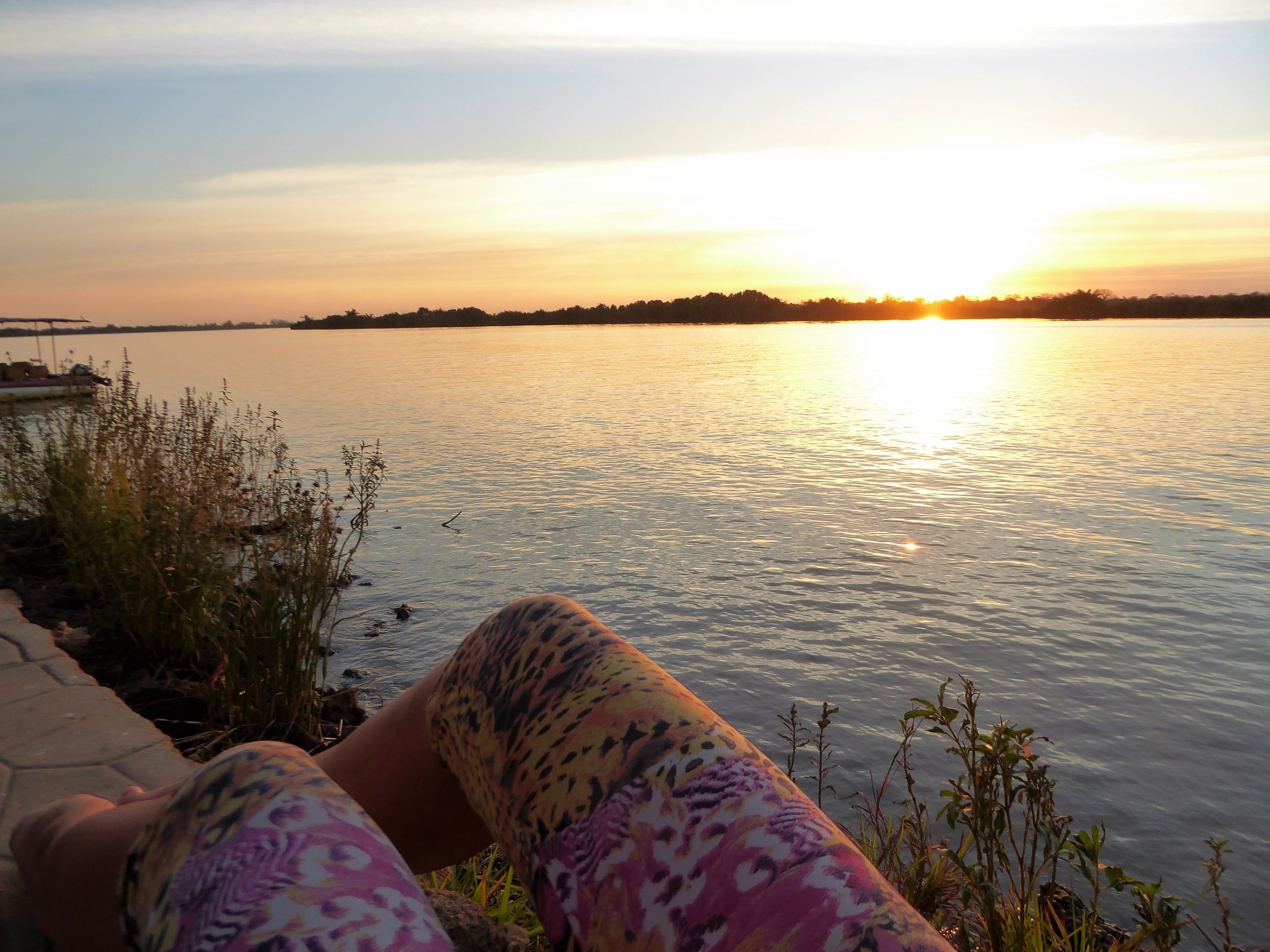
What to Do in the Janjanbureh Area
It was only a short adventure – 3 days into the inland of The Gambia. In hindsight, I should have made it longer. With another stop somewhere along the way. The inland has so much to offer in terms of history, as you see in Janjanbureh. If you click through to my full 3 days you’ll see that it also has a lot to experience in terms of nature!
Would you rather book a trip where everything is settled for you? Check this daytrip from the coast or book your 2 day trip with a night in Janjanbureh incl wassu & Baboon Island.
Combine Your Visit With:
Wassu Stone Circles (30 min cycling from Kuntaur)
- UNESCO World Heritage
- Mysterious megalithic stones from 750-1000 AD
- Beautiful cycling trip through villages
Baboon Islands National Park (visiting by boat)
- Chimpanzee rehabilitation center
- Boat trip over the Gambia River
- Chance of hippos and many bird species
Kuntaur
- Small authentic village
- Excellent base
- Experience local life
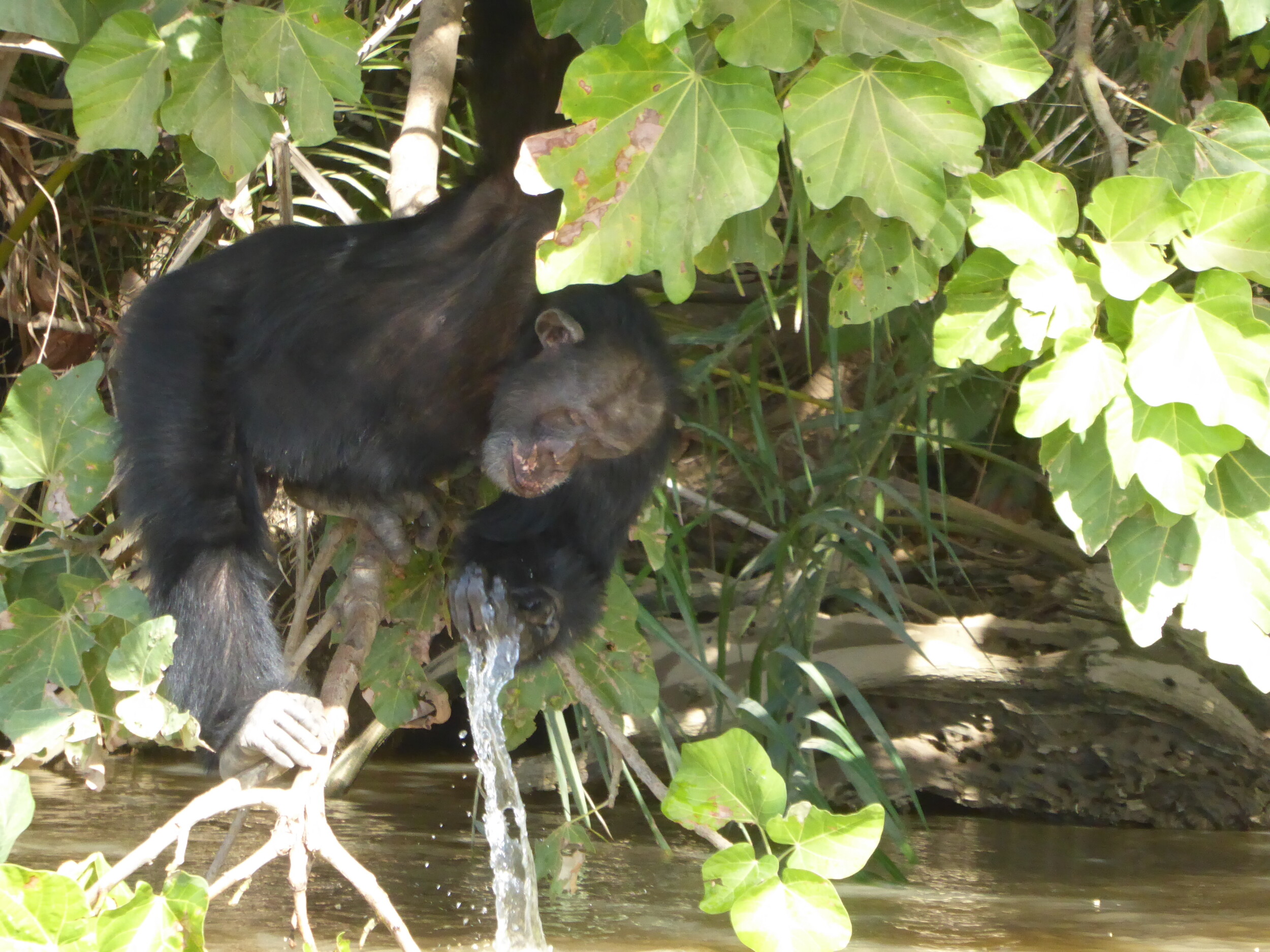
My Personal Reflection
A visit to Janjanbureh is not an easy experience. It confronts you with a dark past. With injustice. With suffering. The stories that local guides tell are sometimes difficult to verify. Fact and fiction run together. But the emotion is real. The history is real. The suffering was real.
For me it was important to visit this place. To pause. To commemorate. Not to forget. Janjanbureh makes you think about the colonial past. About the role of Europe. About the impact that is still felt centuries later. It’s not a cheerful day trip. But it is an important one.
Frequently Asked Questions About Janjanbureh / Georgetown
- Why does the place have two names? The original name is Janjanbureh. The British renamed it Georgetown in 1823. Since 1995 the official name is Janjanbureh again, but locally Georgetown is still often used.
- Were slaves really traded here? The region played a role in the slave trade before 1807. Georgetown itself was founded in 1823 as a settlement for freed slaves, after the slavery ban. Local stories are sometimes embellished.
- Do I need a guide? Not mandatory, but strongly recommended. Guides have access to buildings and can tell the history. Without a guide you only see exteriors.
- Is Janjanbureh safe? Yes, very safe. Gambians are hospitable and friendly. Normal caution is sufficient.
- How much time should I set aside? At least half a day for Janjanbureh itself. Ideal is 2-3 days for the entire region (including Wassu, Baboon Islands, Kuntaur).
- Can I do it in one day from the coast? Technically yes, but it becomes extremely long (10-12 hours traveling). Better is at least one overnight stay in the region.
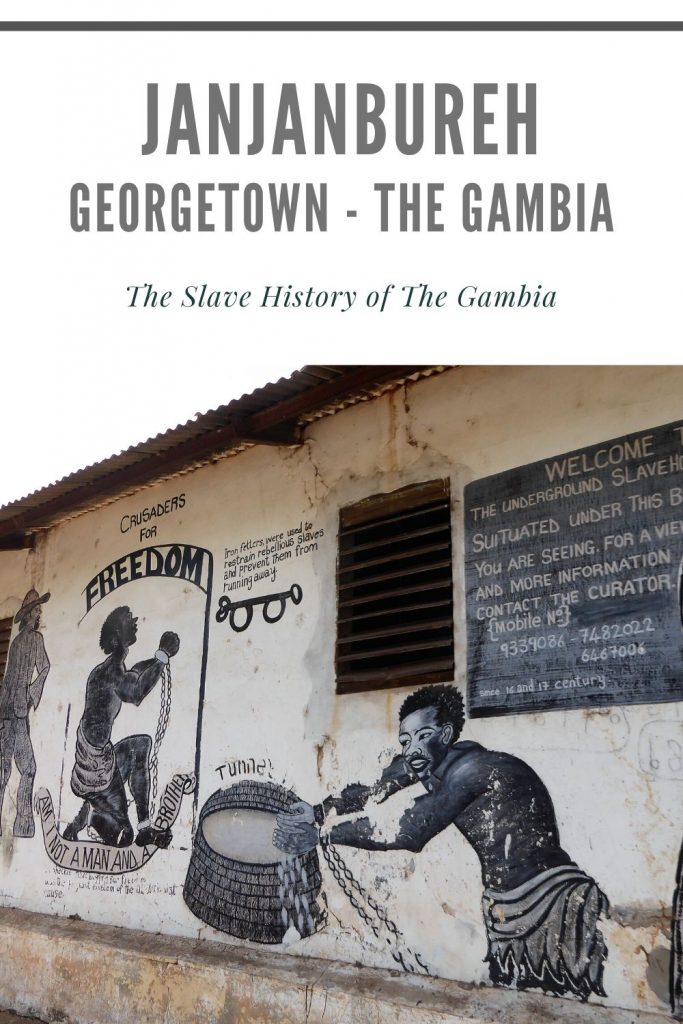
Want to read more about my trip in The Gambia?
- Having dinner with the locals – Resi Rest
- Visiting James Island – Kunta Kinteh
- Cycling to the fish of Tanji – The Gambia
- Why I didn’t travel solo in The Gambia
Are you looking for the Africa of the safaris? Then go to Masai Mara NP in Kenya

